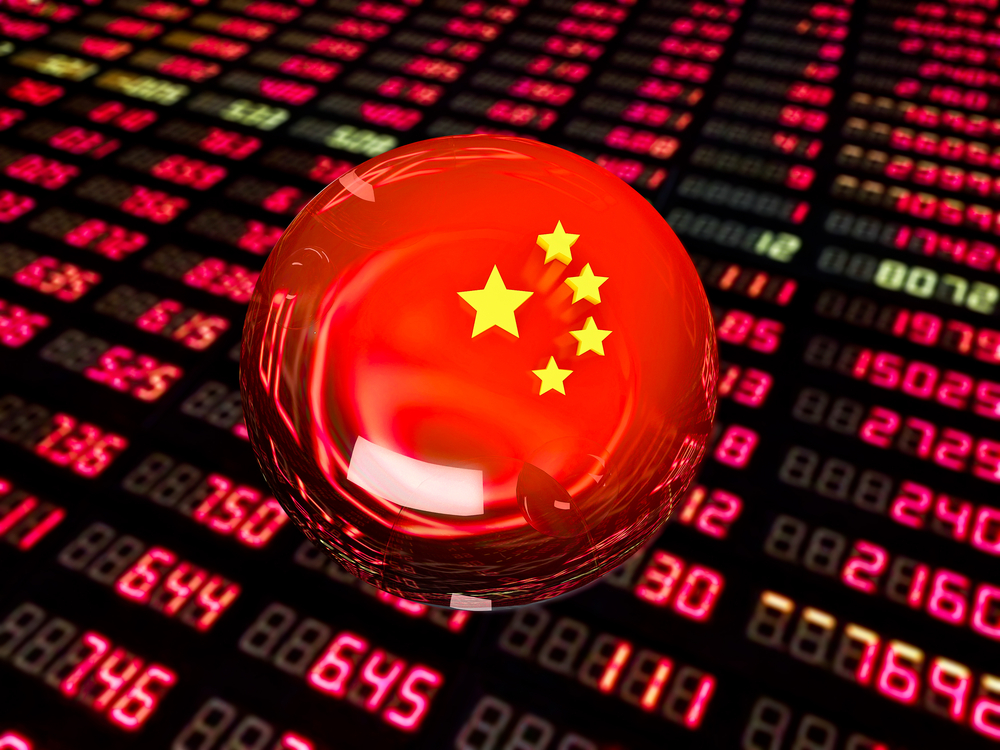China’s Latest Rocky Road

Please note that we are not authorised to provide any investment advice. The content on this page is for information purposes only.
Recent market volatility is neither entirely warranted nor unexpected. In China, it reflects a confluence of forces; but in the US and internationally, international worries are fueling the volatility. On Monday, January 4, China’s A-shares plunged by about 7%, whereas the renminbi (RMB) weakened to 6.52 relative to US dollar.
Recent market volatility is neither entirely warranted nor unexpected. In China, it reflects a confluence of forces; but in the US and internationally, international worries are fueling the volatility. On Monday, January 4, China’s A-shares plunged by about 7%, whereas the renminbi (RMB) weakened to 6.52 relative to US dollar.
The CSI 300 index, which tracks large-cap stocks in Shanghai and Shenzhen, suffered the largest single-day plunge in months. Soft data (Caixin PMI’s slowdown to 48.2) fueled the fall. However, the 0.4 decline was too small for an adequate trigger.
One should expect moderate RMB depreciation, with occasional volatility, after recent reforms of the currency peg and the ongoing RMB internationalization.
So why did markets react so strongly and will there be more of the same?
Snowballing
The market reaction was a strong one, but not exactly unexpected, due to the circuit-breaker effect, the expiration of a sales ban, amplified volatility, IPO tweaking, and economic and international concerns.
Circuit breaker effect
Under the new circuit breaker rules, there will be a suspension on trading of stocks, futures and options for 15 minutes, when the CSI 300 Index falls or rises by 5%. In addition, when the index moves by 7%, trading will halt for the rest of the session. While such circuit breakers have received criticism, they have proved useful internationally – and could have been quite helpful amid last summer’s meltdown.
Expiration of a ban
After weeks of extraordinary market volatility, Beijing imposed a half-year ban in July 2015 to prevent major shareholders from selling their investments. With a stake of over 5% in the A-share companies, these majors can move the market, in good or bad. The ban allowed the government to stabilize the market: at year-end 2015, the Shanghai Composite was up 10%, while Shenzhen surged 65%.
Amplified volatility
On Monday, investors were concerned that major shareholders would sell with the expiration of the ban on Friday. In China, individual investors still dominate the market, whereas institutions are the minority. Consequently, Chinese markets are significantly more volatile than those in advanced economies.
IPO tweaking
Last July, the initial public offerings (IPOs) were suspended as part of measures to end the rout that severely impaired market capitalizations. Last month, the IPOs resumed while regulators moved ahead to curb market volatility.
Economic concerns. Despite decelerating growth, rebalancing is moving ahead in China, despite periodic economic uncertainty and market volatility. That will fuel conflicts between “reformers” who demand policy tightening; and “stabilizers” who demand policy stimulus – while investors are left anxious.
It was the snowballing and confluence of these domestic concerns that led to the “black Monday” (but supported a slow recovery in China on Tuesday).
In China, the volatility is likely to continue until the ban’s deadline on Friday, possibly beyond. However, the markets are now over-estimating the threat factor in China but under-estimating the threat factor in the US and internationally.
International anxieties
In the US, the Dow closed down in triple digits, with the worst opening day in years. Elevated volatility indicators suggest the potential of contagion, but not more – for now.
On Tuesday, the US markets plunged, mainly on concerns over rising geopolitical tensions and oil prices that fell below $35 per barrel. The 11-year low in energy prices reflects not just the fall of the energy prices but also diminished global prospects.
IMF Chief Christine Lagarde confirmed the latter and warned of disappointing growth in 2016. The IMF’s new chief economist Maury Obstfeld, who said China, could “spook” the markets again during the year, seconded.
If the IMF timed the comments to contribute to economic uncertainty and market volatility right amid the opening of the markets after the holiday period, they were quite successful.
On Wednesday morning, Chinese markets shut down for the second time this week following only 13 minutes of trading, which caused a 7% plunge in the CSI300 Index – which, in turn, triggered the circuit breaker.
Unease in the Asian markets will prevail as long as feedback effects continue to escalate.
In the coming months, it is the deeper, secular international anxieties that will drive volatility. Currently, these worries focus on the geopolitical meltdown in the Middle East, driven by struggles for regional primacy, the plunge of energy prices, and the associated risks of the Islamic State, exported political terror, and escalating refugee crises.
In the medium-term, these geopolitical forces are reinforced by continued stagnation in Europe and Japan, lingering recovery in the US, Brazil’s severe slump, Russia’s slow recovery amid protracted sanctions, and India’s ample growth potential but slow reforms – just to mention a few.
What will make things a lot worse in the near future are the Fed’s rate hikes, which will amplify the challenges, particularly in commodity-exporting emerging economies, which are likely to suffer from budget and currency crises while fragile developing economies will fare far worse.
Today, the world economy is weaker and more vulnerable to destabilization than ever since World War II. It is time to fasten the seat belt.
Volatile Markets in an Uncertain World is republished with permission from The Difference Group




